This function allows the user to detect and re-configure/restore data types and their configuration information.
Navigate to the Administration—Data Types—Utils menu option to select the Auto Detect feature. The custom data types (DLL files) can be included in the application by choosing the other option, viz. Auto Detect from DLL and Auto Detect from Directory.
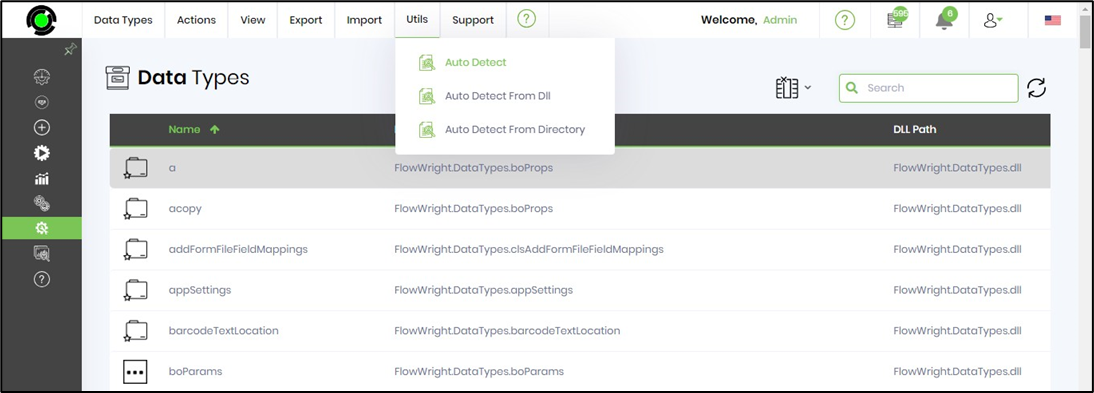
For example, the “Clscheckbox” data type is removed from the data types page. The “checkbox” data type gets restored when the user goes to the auto-detect page, selects the “checkbox” data type, and clicks on the “Manage - Configure” menu item, as shown below. We highly recommend using the auto-detect feature to auto-configure data types.
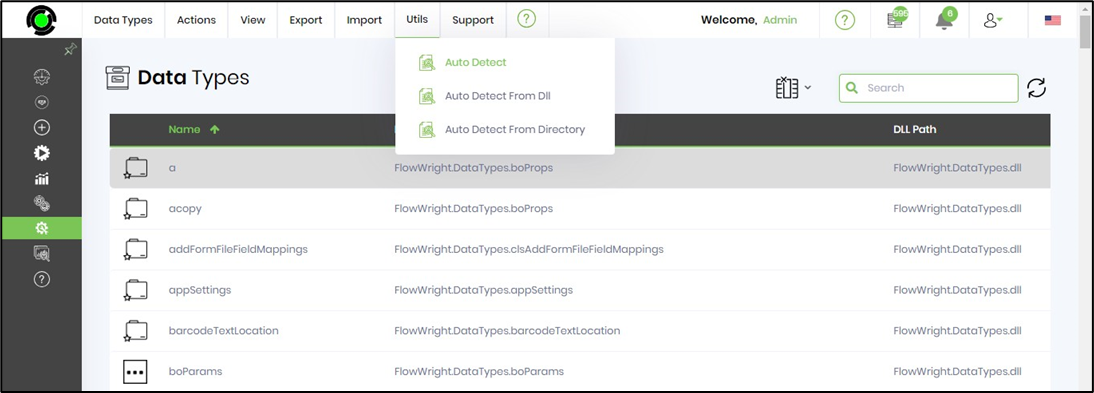
The auto-detect page is rendered in a new tab. The latest data types are detected and listed in the table below. Note that these data types require manual configuration before use.
Click on the Manage—Select all Records menu option to include all data items in the table. Click the Manage—Configure option to add these data types to the application. An alert notification is shown for successful configuration. The application can now use these data types.

Note: Any data types used in the steps cannot be removed.

Auto Detect data types from DLL.
You can just navigate the Utils menu and select Auto Detect from the DLL menu option.

Select the DLL from the drop-down list. The custom DLLs are placed in the application file BIN folder path to be selected.
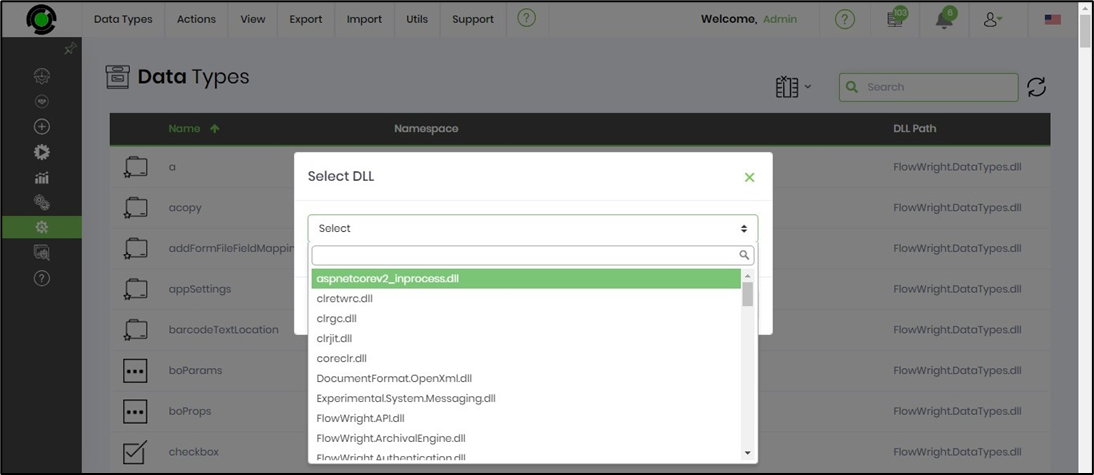
Auto Detect data types from Directory.
Navigate to the Utils menu and select Auto Detect from the Directory menu option.
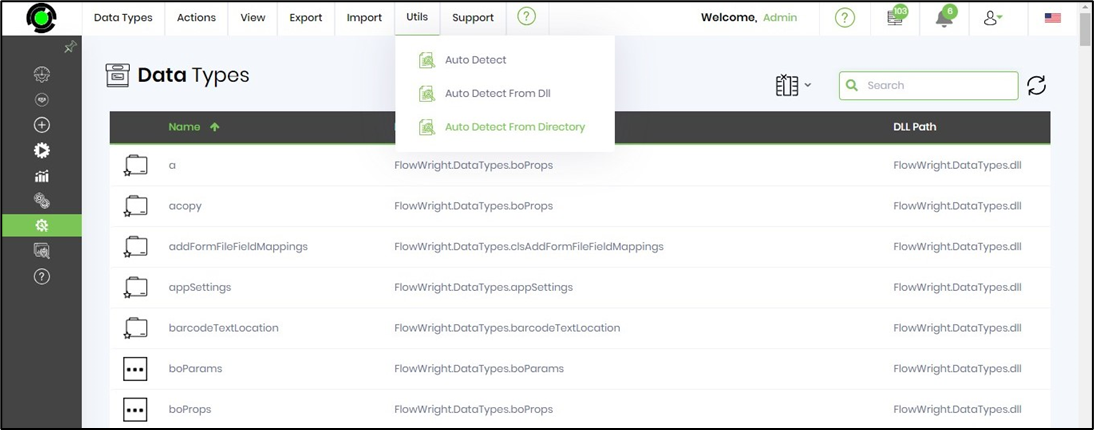
Select the directory from the drop-down list—the custom DLLs from the directory path to be selected.
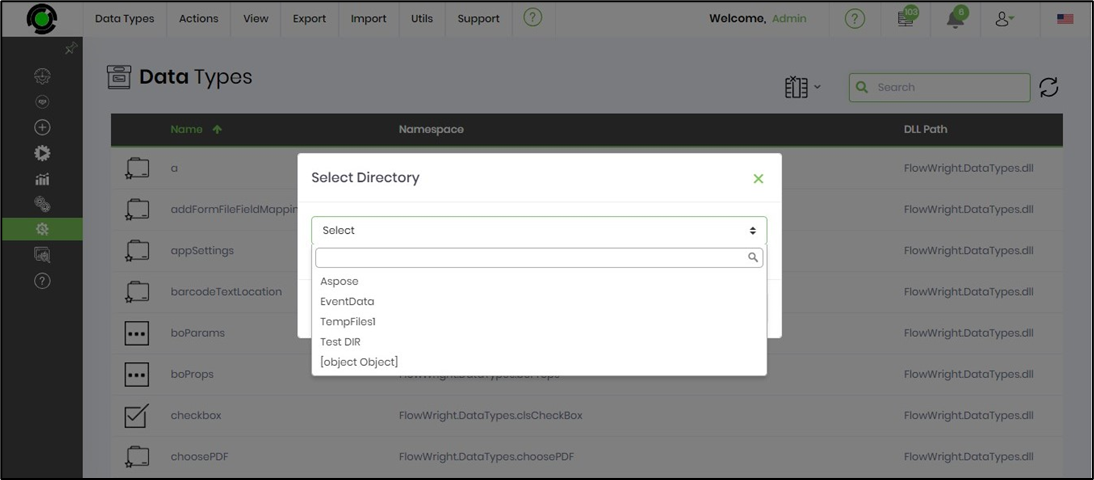
Note: The above dropdown shows all folders except those mentioned in the exclusion list file "RootSubFolders.txt." When you choose a folder, the page fetches all DLL files (including subfolders). Select the DLL to include in the application.
Note: Use this help reference to learn how to build custom data types and use them in FlowWright
https://documentation.flowwright.com/en_US/v10x-how-to-build